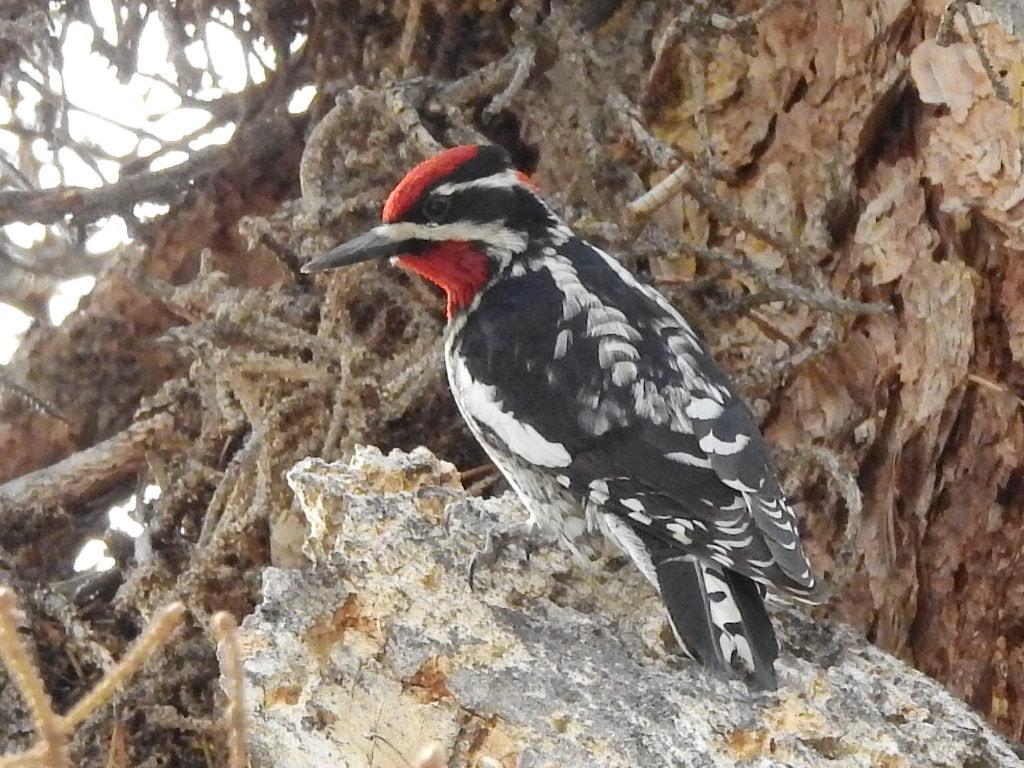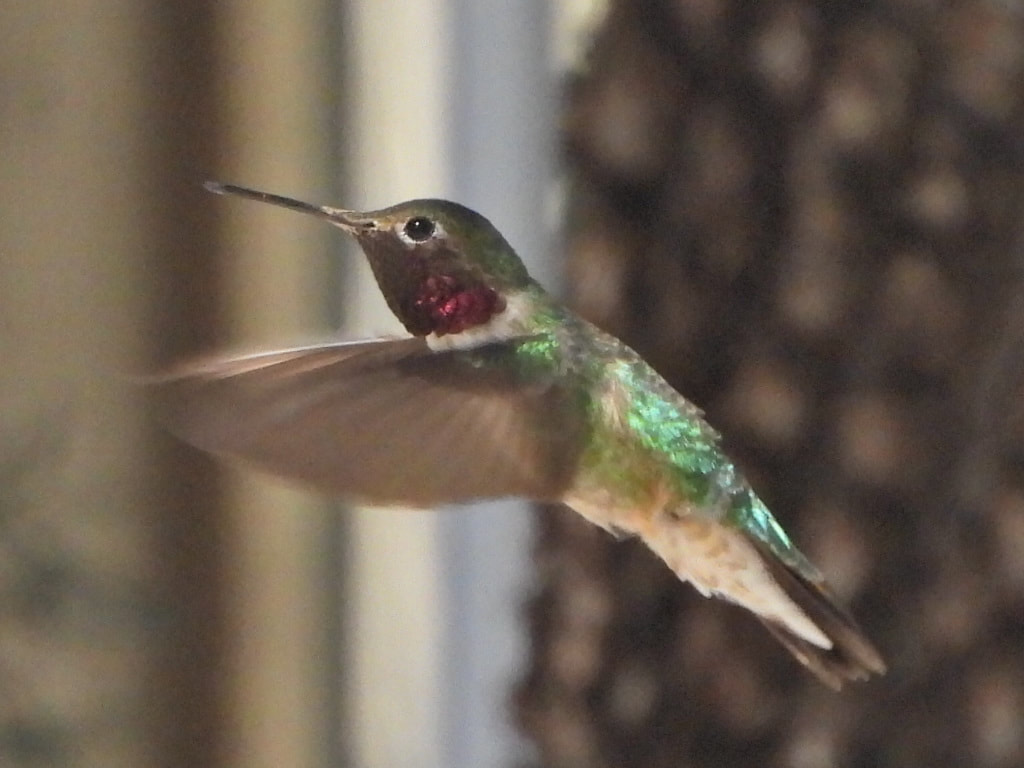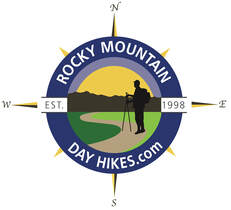|
Notes from the
Trail |
|
by Scott Rashid, Colorado Avian Research and Rehabilitation Institute Now that summer is here, birds are singing, nesting and raising their young. In the winter, the common birds include Common Ravens, American Crows, Northern Pygmy-Owl, Black-billed Magpies, Mountain and Black-capped Chickadees, all three rosy-finches, the three species of nuthatches and more. However, when the migrants begin arriving from their wintering grounds the number of bird species exponentially increase. Most of the birds that spend the winter here, also remain here year-round. There are a few species that migrate north to nest. These northern migrants include the Northern Shrike, Gray-crowned Rosy-finch, Common Redpoll, Lapland Longspur, and the Snow Bunting.  Calliope Hummingbird Calliope Hummingbird When summer arrives, birders search out species including Western Tanagers, Black-headed Grosbeaks, Olive-sided Flycatchers, Dusky Grouses, Western Wood pewees, Broad-tailed Hummingbirds, Band-tailed Pigeons, Lesser Goldfinches, and the cliff, barn, violet-green and Tree Swallows. Many of the species that nest here can be seen when you’re hiking. Birds are usually more prevalent at the trailheads than they are in the middle of the trail or the final destination. The trails that seem to have the most species are those that have the most varied habitat. For example, when hiking Upper Beaver Meadows, birds including Olive-sided Flycatchers, Western Wood Pewees, Williamson’s Sapsuckers, Pine Siskins, House Wrens, Warbling Vireos, Green-tailed Towhees, and Chipping Sparrows can be heard and seen with relative ease. Another good birding location is the Alluvial Fan area and the road to the Endo Valley Picnic area. This is a good spot to find Red-napped Sapsuckers, Pine Siskins, Hairy Woodpeckers, Dusky Grouse, Western Wood Pewees, and Wilson’s Snipe. Many of these species can be seen simply by walking along the road and both listening and searching for the birds as they frequently fly over the road. If you venture higher in elevation and hike the area around Bear Lake, and other higher mountain trails, you may find Canada Jays, Pine Grosbeaks, Red-breasted Nuthatches, Black Swifts, Northern Goshawks, Hermit Thrushes, Three-toed Woodpeckers, Hairy Woodpeckers, and Red Crossbills. If you’re on the tundra there are usually fewer species of birds but larger numbers of individual birds. For example, when on the tundra, keep your eyes open for White-tailed Ptarmigan, American Pipits, Horned Larks, Brown-capped Rosy-finches, White-crowned Sparrows, and Common Ravens. All of which are frequently seen with ease. Oddly enough when on the tundra, you may see birds that appear to be out of place. These include Red-tailed Hawks Prairie Falcons, Mountain Bluebirds, American Robins, and even Broad-tailed Hummingbirds. After the fourth of July, very special avian species arrive in the area. These are the Calliope Hummingbirds and the Rufous Hummingbirds. These diminutive dynamos remain here for a few weeks before making their way to their wintering grounds in Mexico. Male Rufous Hummingbird, as their name suggests are rufous colored and stand out at your feeders, as they are brightly colored and aggressive. The Calliope Hummingbirds are the smallest nesting birds in North America. These birds are often less numerous than the other two species, as they seemingly get pushed around by the larger birds when at the feeders. If you’re out and about after dark, listen for Common Poorwills, Common Nighthawks, Northern Saw-whet Owls, Flammulated Owls and Great Horned Owls. When you’re outside this summer keep your eyes and ears peeled for the many species of birds that can be both seen and heard, you may even see something that you have never seen before.
0 Comments
Leave a Reply. |
"The wild requires that we learn the terrain, nod to all the plants and animals and birds, ford the streams and cross the ridges, and tell a good story when we get back home." ~ Gary Snyder
Categories
All
“Hiking -I don’t like either the word or the thing. People ought to saunter in the mountains - not hike! Do you know the origin of the word ‘saunter?’ It’s a beautiful word. Away back in the Middle Ages people used to go on pilgrimages to the Holy Land, and when people in the villages through which they passed asked where they were going, they would reply, A la sainte terre,’ ‘To the Holy Land.’ And so they became known as sainte-terre-ers or saunterers. Now these mountains are our Holy Land, and we ought to saunter through them reverently, not ‘hike’ through them.” ~ John Muir |
© Copyright 2025 Barefoot Publications, All Rights Reserved






